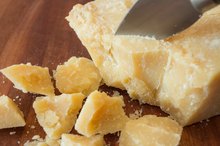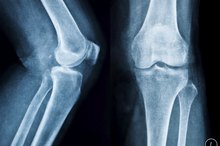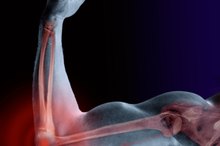What does fact checked mean?
At Healthfully, we strive to deliver objective content that is accurate and up-to-date. Our team periodically reviews articles in order to ensure content quality. The sources cited below consist of evidence from peer-reviewed journals, prominent medical organizations, academic associations, and government data.
The information contained on this site is for informational purposes only, and should not be used as a substitute for the advice of a professional health care provider. Please check with the appropriate physician regarding health questions and concerns. Although we strive to deliver accurate and up-to-date information, no guarantee to that effect is made.
How Can I Get Rid of a Bone Spur on My Knee?
Bone spurs, or osteophytes, are a bony growth formed on normal bones near the joints and cartilage that can cause discomfort and pain. Individuals from all walks of life, particularly athletes and individuals who are generally active, can develop bone spurs. The most common places to find bone spurs are usually the shoulders, spine, hands, feet, hips and the knee; however, they develop in other areas of the body as well. Stress created by strenuous and repetitious activities, like running, jogging and dancing can cause bone spurs in the knees.
If you are experiencing serious medical symptoms, seek emergency treatment immediately.
Causes
Bone spurs can be compared to a callus on the foot. When excessive stress, continual rubbing and excessive stretching of the knee's joints and tight ligaments cause tremendous amounts of pressure over time, the body attempts to protect or repair the area by forming bone spurs in the knee. Bone spurs can also form as a result of calcium build-up in a manner similar to arthritis. Other factors responsible for the development of bone spurs include age and the overall condition of your health. Older people and those who are overweight may also be more susceptible to bone spurs.
Pain from knee bone spurs is caused by the spur rubbing against the nerves. The pain can range from mild to excruciating, depending on the location of the bone spur and the pain may or may not occur intermittently. Some individuals even have bone spurs in their knees, while experiencing no pain or symptoms at all.
- Bone spurs can be compared to a callus on the foot.
- When excessive stress, continual rubbing and excessive stretching of the knee's joints and tight ligaments cause tremendous amounts of pressure over time, the body attempts to protect or repair the area by forming bone spurs in the knee.
Natural Remedies
Bone Spurs in Children
Learn More
When you experience moderate pain from knee bone spurs, relief can usually be obtained by using over-the-counter remedies and medications or homeopathic treatments and natural herbs. A very effective home remedy is to place a clean cotton cloth or a cheesecloth, dipped in hot linseed oil, on the affected area and allow to soak under a heating pad for a couple of hours as needed. Acute pain and discomfort could also be relieved by using dimethylsulfoxide (DMSO), chamomile, horsetail tea, curcumin or arnica. As a preventative measure, calcium supplements and a good exercise program are always recommended. However, these treatments will only help to alleviate the pain of the bone spur. Professional medical treatment by a qualified doctor is the only way to remove a bone spur entirely.
- When you experience moderate pain from knee bone spurs, relief can usually be obtained by using over-the-counter remedies and medications or homeopathic treatments and natural herbs.
Long-term Treatment
A good diet, exercise program and homeopathic remedies are often all that are needed to manage knee bone spurs. With these alternative treatments, the pain may go way and if the bone spur remains asymptomatic, removal may not be necessary. Depending on your lifestyle, your doctor may also recommend steroid treatments at the knee, if the spur is in its early stages. This can help alleviate pain and stop the growth of the bone spur. When pain is chronic, non-steroid anti-inflammatory drugs (NSAIDs) may be prescribed. However, when your range of motion is affected and pain is intolerable, your doctor may recommend surgery as a last resort. Surgery is the only way to actually remove the spur. It involves a procedure in which you go under anesthesia while the doctor scrapes the bone, removing the spur. Physical therapy and rehabilitation is usually required after surgery to remove a knee bone spur.
- A good diet, exercise program and homeopathic remedies are often all that are needed to manage knee bone spurs.
- With these alternative treatments, the pain may go way and if the bone spur remains asymptomatic, removal may not be necessary.
Related Articles
References
Writer Bio
Alexis Writing has many years of freelance writing experience. She has written for a variety of online destinations, including Peternity.com. She holds a Bachelor of Arts in communication from the University of Rochester.








